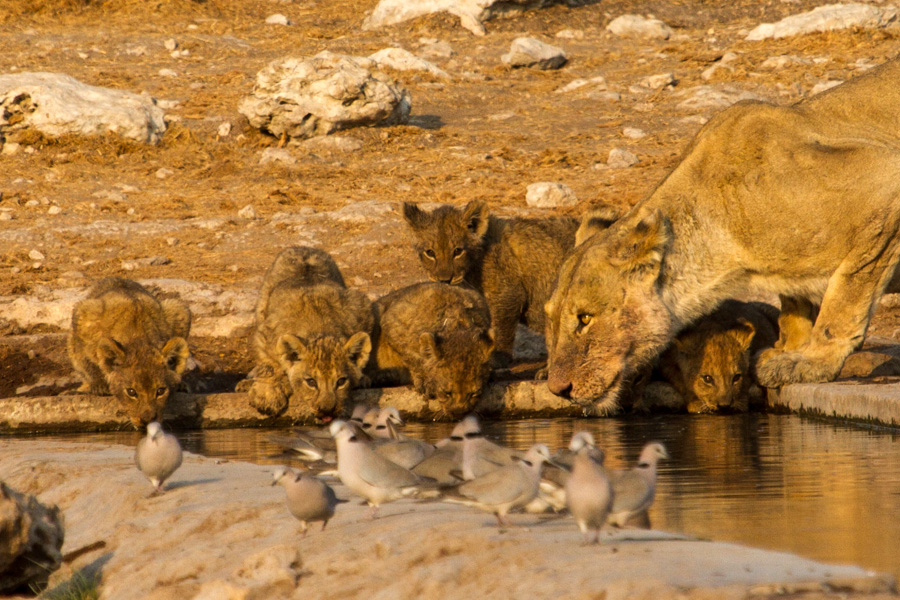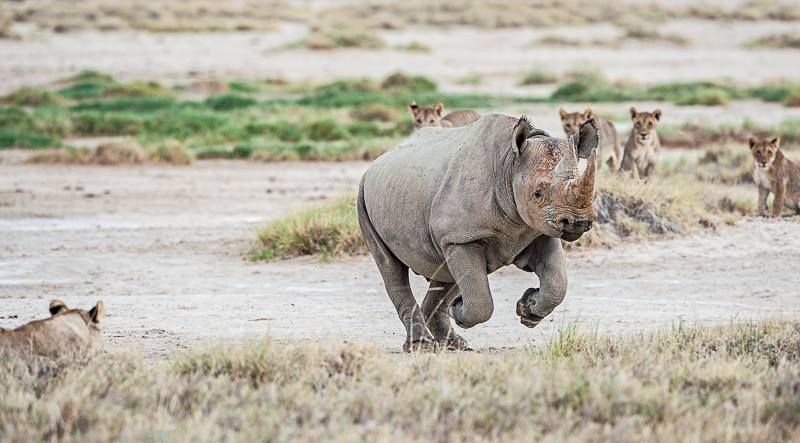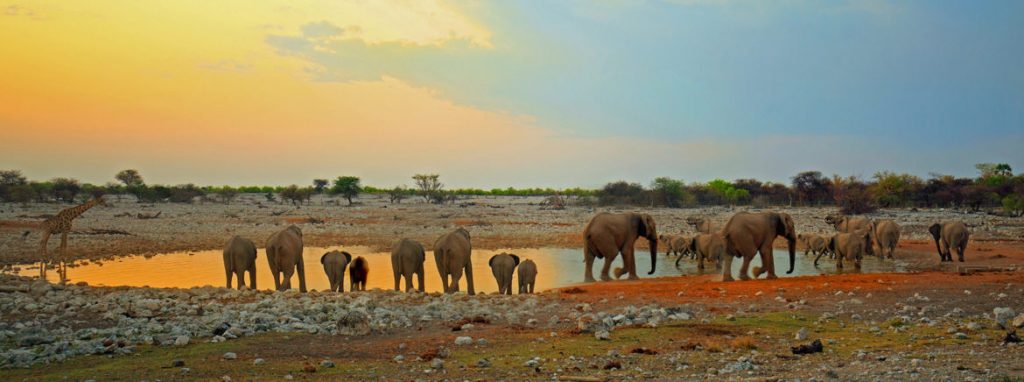Africa’s Off-the-Beaten Path Treasure
Africa’s Off-the-Beaten Path Treasure
Namibia astonishes with its Wildlife, Red Desert, Wild Coastline and Cultural Immersion!
With a quarter of the world’s cheetahs, the last remaining population of wild black rhinos, a million flamingos, lions, elephants, giraffes, leopards, zebras, and more, and all well-adapted to living in dry and arid weather, Namibia’s Etosha National Park provides a magnificent safari adventure. Go camping, glamping or stay at a lodge with a direct view of one of the many watering holes in this 8,600 square mile reserve.
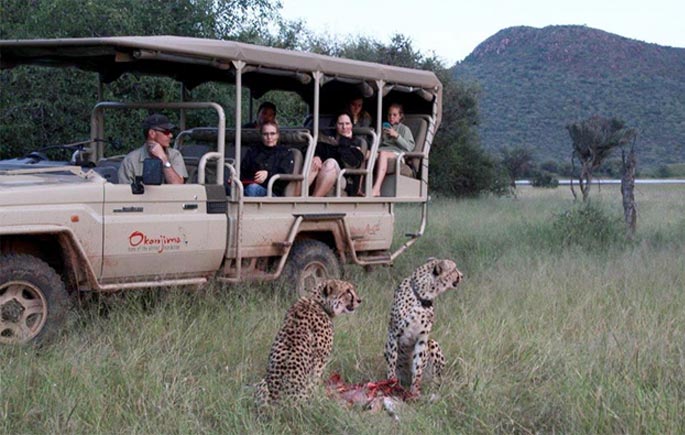
Okonjima Nature Reserve is famous for frequent cheetah and leopard sightings as well as the AfriCat Foundation. The foundation undertakes research, community support, environmental education projects, as well as conservation work to rehabilitate animals such as the cheetah and hyena.

Portuguese sailors called Namibia’s Skeleton Coast, “the Gates of Hell” and Namibia’s San Bushmen refer to it as, “the Land God Made in Anger”. Snaking along the Atlantic ocean, the area is stunning in its bleakness and desolation and one of the few places in the world where the desert meets the ocean. When the cold water currents of the Atlantic Ocean meet the hot dry air of the Namib Desert, it creates thick fog. This fog has caused many ships to run aground. You will find colonies of seals at Cape Frio and Cape Cross Seal Reserve numbering in the hundreds of thousands. Surprisingly, animals such as lions, hyenas, giraffes, zebras, ostrich and even elephants can be seen wandering around. The coast also attracts a steady stream of surfers.
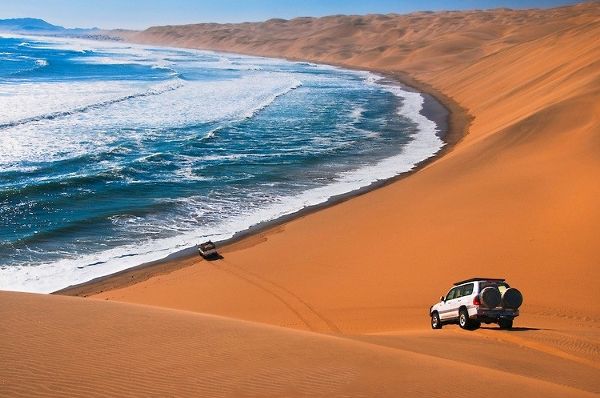
UNESCO-listed Namib Sand Sea is the only coastal desert in the world with extensive fields of sand dunes, influenced by fog. Covering an area of 11,600 square miles, the beautiful red sand flows right up to the wild waves of the Atlantic ocean.
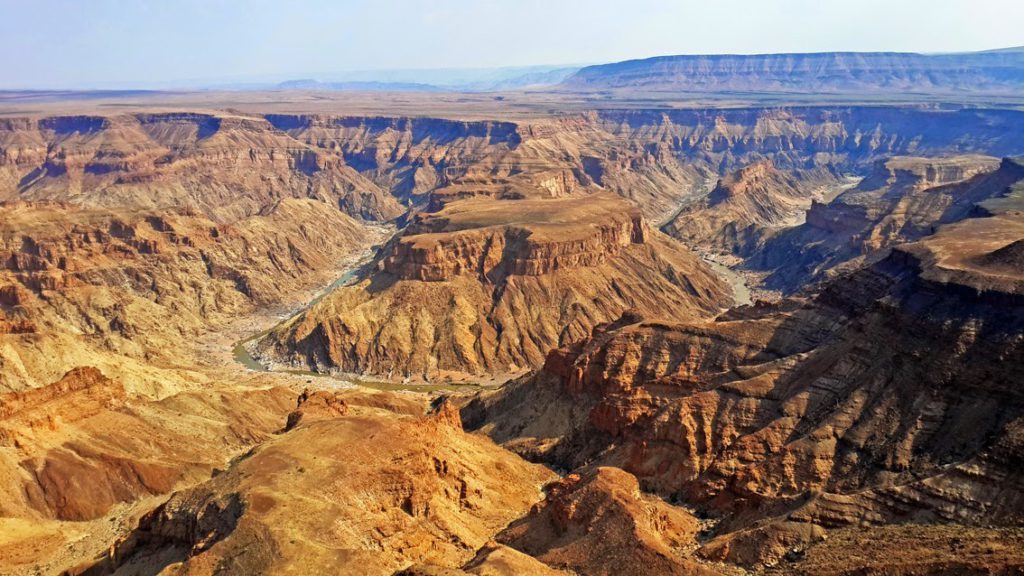
Fish River Canyon is the second largest canyon in the world, after the USA’s Grand Canyon. With towering rock faces, deep gorges and the snaking 500 mile-long Fish River, the views are best at sunrise or sunset.
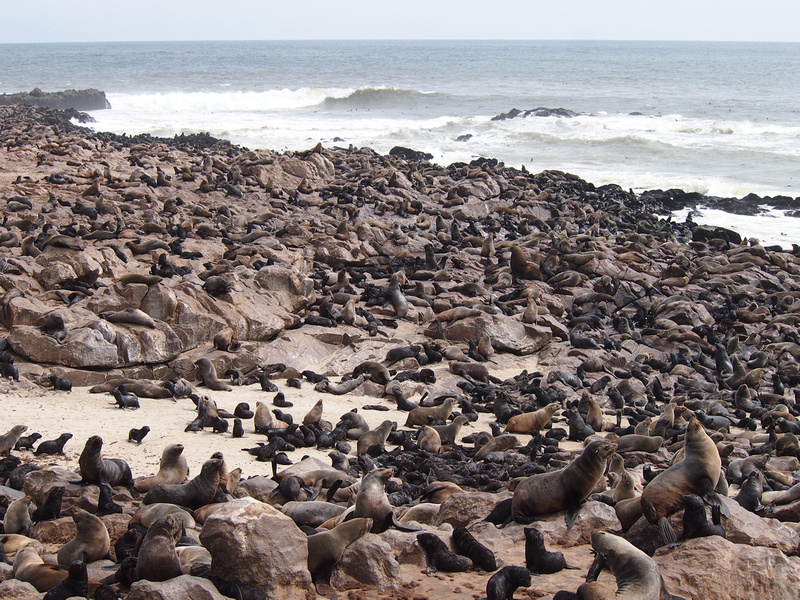
Cape Cross Seal Reserve is home to the largest breeding colony of Cape fur seals in the world. Hundreds of thousands of seals congregate to loll on the beach and play in the surf. During peak breeding season, the beaches are completely concealed from view by a writhing mass of fur seals, numbering over 200,000. At this time, newborn pups are a highlight.
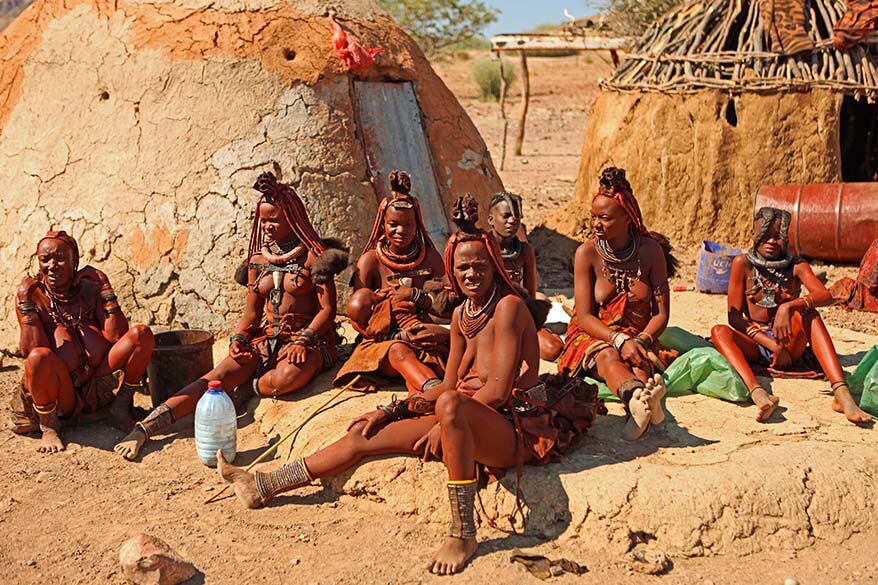
The Himba are a semi-nomadic tribe of people, who have clung to their traditions. The beautiful Himba women are noted for their intricate hairstyles, traditional jewelry and the red ochre paste they use on their bodies to stay cool and moisturized in the dry heat. A visit with the Himba people is a great way to end your adventure in Africa’s off-the-beaten-path treasure.
Planning Tips
Airport: Fly into Hosea Kutako International Airport in Windhoek, Namibia’s capital city.
Best Time to Visit: June to October is the best time to see Namibia’s wildlife.
Tours and Activities: CrissCross Namibia offers private, guided and personalized itineraries for families and small groups, as well as self-driving options. Founded by Thinus Blauuw 15 years ago, the company offers all-inclusive budget, standard and luxury options starting at US$ 275 per person per day. Book a short few days private tour or crisscross Namibia for a month.

